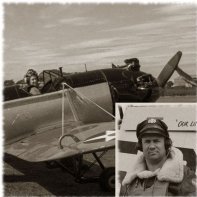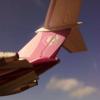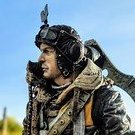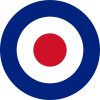Search the Community
Showing results for tags 'Fokker'.
-
Eastern Express has just released 1/144th Fokker F-27-200 kits - ref. EE144115-1 - Fokker F-27-200 Balair Source: https://hobbyterra.com/product/fokker-27-200-balair-eastern-express-144115-01.html - ref. EE144115-2 - Fokker F-27-200 Air UK Source: https://hobbyterra.com/product/fokker-27-200-air-uk-eastern-express-144115-02.html - ref. EE144115-3 - Fokker F-27-200 Finnair Source: https://hobbyterra.com/product/fokker-27-200-finnair-eastern-express-144115-03.html - ref. EE144115-4 - Fokker F-27-200 SAS Source: https://hobbyterra.com/product/fokker-27-200-sas-eastern-express-144115-04.html - ref. EE144115-5 - Fokker F-27-200 North West Source: https://hobbyterra.com/product/fokker-27-200-northwest-eastern-express-144115-05.html - ref. EE144115-6- Fokker F-27-200 All Nippon Airways Source: https://hobbyterra.com/product/fokker-27-200-all-nippon-airways-eastern-express-144115-06.html V.P.
- 20 replies
-
- 1
-

-
- Eastern Express
- Fokker
-
(and 1 more)
Tagged with:
-
Hot on the heels of her Spitfire PR.1G diorama, completed in January 2017, my daughter started her new project in early February. This was going to be her third build, but having done such a good job of her Spitfire and her first model, a Red Arrows Hawk, I had confidence she would manage. This project was going to be a wall hanging picture / diorama of "Snoopy verses the Red Baron" using a 1/72 Revell kit and a scratch built Snoopy and kennel. Framing the picture allows it to be hung on the wall where it won't be damaged and also it will keep the dust off the models.
-
Fokker DR.1 ProfiPACK Edition 1:72 Eduard One of the best known and most recognisable aircraft of the First World War, the Fokker Dr.I was developed in response to the appearance of the Sopwith Triplane over the skies of the Western Front in early 1917. Although it couldn’t match other fighters for speed, either in a straight line or in a dive, its initial rate of climb was good and it was supremely manoeuvrable. The Fokker was used by a number of aces, most notably Manfred von Richthofen who scored his final 20 victories in the type until he was shot down and killed on 21 April 1918. The Kit This kit is was originally released in 2000 but is still a good one. The parts are nicely moulded, with no traces of flash but a respectable amount of moulded detail. The cockpit comprises six parts, including a floor, seat, control column and instrument panel. As this is a profipack, there seatbelts and host of other photo-etched parts to use in the kit. These include seatbelts, engine wiring harness, gun cooling jackets, and the pilots seat. Once the fuselage halves have been joined, he lower and middle wings can be added, along with the brace of forward-firing machine guns. The wedge shaped horizontal tail is moulded as a single, solid part, as is the vertical tail/rudder. The upper wing is the last major part of the airframe to be added, along with the outer struts, which slide through the middle wing to join both lower and upper wings together. A fairly basic engine is included, but Eduard to produce a resin replacement if you wish to add detail here. Once the engine and cowling have been fitted, all that remains to do to finish the model is to add the propeller, landing gear and tail skid. One advantage of the DR.1 is the minimal amount of rigging required to complete the model. Decals This being a ProfiPACk edition a generous 5 marking options are included: 450/17, Lax Lt Jacobs, Jasta 7, Rumbeke, Belgium March 1918 545/17 Lt Weiss, Jasta 11, Cappy, France April 1918 425/17 Rttm Von Richthofen, JG1, Lachelle, France March 1918 404/Hptm Von Tutschek, JG2, Toulis, France Feb 1918 454/1 Lt Von Richthofen, Jasta 11, Avesnes-le-Sec, France March 1918 The decal sheet is printed in house and should pose no problems, Conclusion This is an appealing kit, largely because of its simplicity. In contrast to some of their more modern kits, Eduard made it no more complex than it needed to be, and as a result, it majors on modelling pleasure and buildability. What better way than to start a collection of WWI subjects? Recommended. Review sample courtesy of
-
Kit-Studio from Germany & Classic Plane has releases 1/72nd Fokker F-50 and F-60 kits Sources: https://designer.home.xs4all.nl/models/f50/f50_engtxt.htm#july10 https://www.facebook.com/ScaleModels.ru/photos/a.632237406802735.1073741827.129310540428760/1935820573111072/?type=3&theater Fokker F-60 conversion kit for Airfix F-27 https://designer.home.xs4all.nl/models/f60/f60mod.htm V.P.
- 2 replies
-
- 2
-

-
- Kit-Studio
- Fokker
-
(and 1 more)
Tagged with:
-
I see that F-RSIN Plastic are releasing 1/144th scale kits of the Fokker F.28 at the forthcoming Telford show. Both the shorter fuselage 1000 and the longer 4000 in are shown in various schemes. I've always liked those little Fokkers, so I'm quite pleased. Question is, does the F.28 belong in the Classic or Modern section? Being as there are hardly any left in service, I chose classic even though it still seems fairly new to me. Dave
-
I would like to present to you my last completed project. It's Fokker D.XXI, the Dutch Air Force. The model is an old Matchbox, which is very dear to me, as well as most of their models. I did not often see this plane on forums, so it was an additional motivation for me to make it. Here's the picture. Enjoy.
-
Hi folk's,after seeing Wolwe's beautiful model in RFI I decided eventually I must have another build of this iconic aircraft having built the newer tool Revell one in 1/72 scale a year or two back so made a note for the future,anyway my LMS were clearing out Revell stock with 40% off including the fifty plus year old 1/28 molding so sooner than expected I get the chance.Despite it's age it holds up well flash wise,and for a tenner I get a decent size model to play with an OOB build coming with just a little extra work where needed without going OTT. Box art familier to most. First job after cleaning up the few main part's was to enhance what can be seen in the cockpit ready for the base cplour, Ihave a post in WW1 aviation for tips on painting especially the wood prop.
-
Hi folk's,Wolwe's recent superb posting got me to hankering to add the famous red triplane in a larger scale to the collection at some pointEduard's 1/48 offering being the kit of choice as I previously built Kempf's machine in one of their boxing's Anyway My LMS is clearing out Revell kits at discounted prices and out I came with the ancient 1/28 scale kit! 1957 is stamped on the molding but for a tenner for a fun build who cares,what I wanted feedback on was what finish in reality did this aircraft have? I know it was red so as on the 1/72 scale kit I did the metal cowl can be shaded differently but would there have been different shades on other surfaces with differing depths as I want to build it wart's and all without adding this and that AM (if indeed there is any) Agood paint job might make a difference,so tips and techniques from you WWI modeller's please.
-
In project/design by MikroMir is a 1/48th Fokker G-1A Jachtkruiser kit - ref. 48-016 Source: https://www.facebook.com/permalink.php?story_fbid=1512478232163241&id=1416295571781508 3D renders in progress V.P.
-
Fokker D.VII (Early) 1:32 Wingnut Wings Introduction The Fokker D.VII first appeared over the western front in May 1918, as the Great War was entering its final phase leading up to the November Armistice. At first issued in small numbers to elite pilots, it proved to be a very capable fighter and began to build a formidable reputation. Production contracts were awarded to Fokkers' main rival, Albatros, such was the need to get production ramped as quickly as possible. In fact Albatros produced more D.VII's than Fokker themselves, and of better quality. The early machines revealed a tendency to engine overheating, so various attempts were made to increase the airflow around the engine bay, mainly by cutting vents and louvers in the cowling panels. The number and location of these vents can often be of assistance in identifying the age and manufacturer of particular D.VII's in old photographs. Much has been written about it, but it was an outstanding fighter often awarded the accolade of being the finest such machine produced by any side in the conflict. The Kit It was something of a surprise to see this kit announced on Wingnut Wings website a few months ago, but it is certainly very welcome. All their previously released versions of the D.VII sold out long ago, and have been fetching silly money on auction sites. As usual we start with the wonderful Steve Anderson artwork adorning the box lid, depicting a pair of Jasta 15 D.VII's in a clear blue sky. Opening the box reveals that it is packed from top to bottom with a host of individually shrink wrapped sprues, leaving no room far anything to rattle around. It is a good idea with any Wingnut Wings kit to carefully unpack it in sequence, putting each item in the upturned lid as you go. Then reverse the process to get it all back in, otherwise you might find you can't get the lid back on properly. There is that much packed into every kit! Wingnut wings have previously released four other boxings of the D.VII in Fokker, Albatros, OAW, and Fokker D.VII(F) forms. They naturally share a lot of common parts, with the individual variations being taken care of by other sprue(s) unique to the particular version. Construction starts with the cockpit, and here sprue A holds most of the parts. Pay attention to the instructions to make sure you select the correct ammunition tank and machine gun mounts. They vary in height according to early, mid, and late production. The etched fret provides seatbelts, which look very good once painted up and applied to the seat. Having made several of these kits already, I have a number of previous 'build' photographs that are useful here. The cockpit framework builds up very precisely, so you must ensure that you scrape any paint away from mating surfaces, and that you fit items like the firewall and ammo tank correctly. Any incorrect fitting will result in the finished unit 'bulging' and being too wide, which will then interfere with the fuselage sides closing around it. Several items have pins that fit into sockets on sideframes B10 & B11. It is a good idea to ream these out with a micro drill after painting. As usual, Wingnut Wings provide superb instructions, showing detailed colour photos of the interior of the Memorial Flight Associations meticulous replica. These are accompanied by coloured CAD drawings showing how it all fits together, with paint references. The engine bay is made up of several beautiful mouldings that replicate the welded steel tubing of the real thing. Take care with parts B14 & B15 when you remove them from the sprue. On my first build I inadvertently cut them at the front where the engine mounting plates end. But these 'spigots' that stick out are later used as radiator mounts. My fault, the instructions show them clearly but I wasn't paying attention! I absolutely love Wingnut Wings engines, they make super little models in their own right, especially if you go the extra step and wire up the magnetos to the plugs. Fine copper wire is ideal for this, and I often use a little bit of artistic licence and paint them in a light colour. After all, If I have installed all the ignition leads, I want them to be visible. Alternate air pumps, intake manifolds, and decals are provided for whichever of the five colour schemes you select. The Mercedes D.IIIa engine powered many different German aircraft, and thus features in several Wingnut Wings kits. This one was built for the initial release of Wingnuts Fokker D.VII. The fuselage halves are closed around the completed interior, but only the top seam is glued. Once dry, the bottom can be glued, and a strip of 'stitching' fitted in to a channel running along the underside. This works well, and is the only way the stitching can be replicated without having a join line right down its middle, which would then be lost as you sanded down the seam. The two LMG 08/15 Spandaus are provided with etched brass jackets, but if you are not confident optional full plastic ones are supplied as an alternative. Two styles of windscreen are on sprue C, which is typical of Wingnut Wings attention to detail. They are tiny and very similar, but you get both. Not all manufacturers would do this. Sprue I holds all the engine cowling panels, and it is this whole sprue that is completely different in the OAW and Albatros releases of the kit. Even within each kit there are multiple options for all the cowlings, such was the variation among early, mid, and late production from even the same manufacturer. As an early machine, the ones applicable to this kit are the plain ones, or those with only a few louvers - some of which have to be cut off anyway. The instructions make it all perfectly clear. The area is finished off by fixing one of two different styles of exhaust to the engine. Sprue D is provided in duplicate, with all those items that you require two of. Three different wheel hubs are present, but only one style is applicable to the Fokker built machines. The wings are simple to build and feature lovely rib detail. They can in fact be built, primed, painted, and decalled while the main construction of the cockpit/fuselage is going on. Final assembly involves beautifully moulded three-way cabane struts, parts B8 and B12. Use a drill to clear out their lower end mounting sockets at the top of the undercarriage legs. The tolerances are tight, so make sure nothing is clogged with paint. All the struts will fit precisely, and the bonus is that hardly any rigging is required. Markings and decals. Five different schemes are offered, with option C having a variation on the colour of the nose area, either red or yellow. A. Fokker D.VII, 262/18, Emil Thuy, Jasta 28w, mid-1918 (35 victories) B. Fokker D.VII, Rudolf Berthold, Jasta 15/JG2, mid-1918 (44 victories) C1.Fokker D.VII, Max Kliefoth, Jasta 19, October 1918 (3 victories) C2.Fokker D.VII, Hugo Schäfer, Jasta 19, October 1918. As above but with red nose area. D. Fokker D.VII, Reinhold von Benz, Jasta 78b, August 1918 (1 victory) E. Fokker D.VII, Bruno Loerzer, Jasta 26/JGIII, November 1918 (44 victories) Four A4/Letter sized decal sheets are supplied, with the first sheet containing all the individual markings for options A to E. As always they are close to perfection, with perfect colours, register, minimal carrier film and superfine detail. Some of the tiny data plates, shown at least double real life size, are completely readable. Produced by Cartograf, need I say more? Two sheets of lozenge decal accompany the main sheet, one of four colour lozenge and another of five colour. The five colour is especially interesting as it provides two types of underside lozenge. The 'normal' and an overpainted set, replicating where pale blue paint has been washed over the lozenge fabric. I have never seen this on a decal sheet, but it looks great. The lozenges are just visible underneath, and having it provided like this takes all the risk out of having to do it yourself. Options A an B both use it, the others use the normal four colour decal. An interesting variation is that Option A actually uses five colour underside lozenge on both wing upper surfaces, with normal upper five colour on the ailerons. Certainly a very interesting and attractive scheme. The decals themselves are in 'cookie cutter' format, designed and shaped to apply directly to the wing surfaces, complete with rib tapes. Be sure to paint the wings first, to give the decals something to 'bite' onto. Don't be tempted to think you can apply them directly to bare plastic. You can't, because they wont stick. The Fokker 'streaky' camouflage can be rather daunting to paint, but Wingnut Wings have made it simple by creating a full set of 'streak' decals for the fuselage. These are the same as provided in their original Fokker release, and found that they give an excellent result when applied over a pale green (or clear doped linen) painted fuselage. Again referring back to my earlier build; (flash photograpy does't 'arf make the colours look bright! It a lot more subtle in real life). Conclusion. Wingnut Wings other D.VII's sold out rather quickly, so don't hang about with this one. Another benefit is that this boxing contains all the plastic parts and options that were in the original (now out of production) Fokker D.VII release. So if like me, you have the original kit but wanted to build more than one option from it, then you now have everything to assemble an early, mid, or late production Fokker built D.VII contained within this box. But if you missed earlier Fokker built D.VII completely, now is your chance to fill that gap in your collection. Buy two and build an early version straight from the box, and use the other one with Wingnut Wings own decal sheet 30006 'Fighting Fokkers part 1', which gives options for some later Fokker D.VII's. Another absolute beauty from Wingnut Wings, very highly reccomended. Review sample courtesy of Previous builds; 32011 Fokker D.VII (Fok) 32027 Fokker D.VII (Alb) 32030 Fokker D.VII (OAW) with decal sheet 30009 Fokker D.VII (OAW) Fighting Fokkers part 4
-
Special Hobby is to release a 1/32nd Fokker D.II kit - ref. SH32065 Sources: http://www.specialhobby.net/2017/03/sh32065-fokker-dii-132-pripravujeme.html https://www.facebook.com/specialhobby/posts/1351213861640141 V.P.
- 11 replies
-
- 1
-

-
- D.II
- Special Hobby
-
(and 1 more)
Tagged with:
-
After the MD-80/B-717, https://www.facebook.com/643670012347411/photos/a.712733852107693.1073741830.643670012347411/826154974098913/?type=3&theater https://www.facebook.com/643670012347411/photos/a.712733852107693.1073741830.643670012347411/826155054098905/?type=3&theater https://www.facebook.com/permalink.php?story_fbid=846507175397026&id=643670012347411 Replicas by JC from Argentina is working on a 1/72nd Fokker F-28 resin kit + support vehicles. Sources https://www.facebook.com/643670012347411/photos/a.712733852107693.1073741830.643670012347411/1206202326094174/?type=3&theater https://www.facebook.com/Replicas-by-JC-643670012347411/ V.P.
- 4 replies
-
- Replicas by JC
- F-28
-
(and 1 more)
Tagged with:
-

Edurard Fokker Dr.1 Engine - 1:72 Eduard
Paul A H posted a topic in Aftermarket (updates/conversions)
Fokker Dr.1 Engine 1:72 Eduard To mark the re-release of Eduard's nifty little Fokker Dr.1 (reviewed here) the Czech firm have bestowed upon us a brand new resin engine. Included in the now-familiar 'Brassin' blister pack are just three resin parts and a tiny fret of etched metal which holds the ignition wiring. The resin parts are beautifully cast and tick all the boxes in terms of fulfilling the functions of an aftermarket upgrade. Recommended. Review sample courtesy of -
Fokker DR.1 Weekend Edition 1:72 Eduard One of the best known and most recognisable aircraft of the First World War, the Fokker Dr.I was developed in response to the appearance of the Sopwith Triplane over the skies of the Western Front in early 1917. Although it couldn’t match other fighters for speed, either in a straight line or in a dive, its initial rate of climb was good and it was supremely manoeuvrable. The Fokker was used by a number of aces, most notably Manfred von Richthofen who scored his final 20 victories in the type until he was shot down and killed on 21 April 1918. This kit is the latest in Eduard's revamped 'Weekend Edition' series, which enables you to build a model as nature intended, unfettered by tiny bits of photo etched brass and a bewildering choice of decal options. Inside this particular box is a single runner containing just 35 plastic parts and a small sheet of decals. The plastic parts first saw the light of day seventeen years ago, and have been released umpteen times since then, including once by the mercurial Smer. The parts are nicely moulded, with no traces of flash but a respectable amount of moulded detail. The cockpit comprises six parts, including a floor, seat, control column and instrument panel. As this is a profipack, there are no photo etched parts, but a set of seat harnesses is provided on the decal sheet. Once the fuselage halves have been joined, he lower and middle wings can be added, along with the brace of forward-firing machine guns. The wedge shaped horizontal tail is moulded as a single, solid part, as is the vertical tail/rudder. The upper wing is the last major part of the airframe to be added, along with the outer struts, which slide through the middle wing to join both lower and upper wings together. A fairly basic engine is included, but Eduard to produce a resin replacement if you wish to add detail here. Once the engine and cowling have been fitted, all that remains to do to finish the model is to add the propeller, landing gear and tail skid. One advantage of the DR.1 is the minimal amount of rigging required to complete the model. Two marking options are included: 479/17, flown by Lt August Raben, Jasta 18, Montingen, France, October 1918; and 195/17, flown by Lt Hermann Vallendor, Jasta 2, Halluin, France, April 1918. The decal sheet is small, but nicely printed. Conclusion This is an appealing kit, largely because of its simplicity. In contrast to some of their more modern kits, Eduard made it no more complex than it needed to be, and as a result, it majors on modelling pleasure and buildability. What better way than to start a collection of WWI subjects? Recommended. Review sample courtesy of
-
Wingnut Wings is to release in May 2017 a 1/32nd Fokker D.VII (Fok) early kit - ref. 32067 Source: http://forum.ww1aircraftmodels.com/index.php?topic=8095.0 V.P.
- 4 replies
-
- 4
-

-
- D.VII
- Wingnut Wings
-
(and 1 more)
Tagged with:
-
I picked up this little kit for around 4€ in a toystore. Post ww1 some german types saw service in the belgian airforce. most where stripped of their guns and used as trainers. I wanted a quick build so i build it almost straight from the box, only leaving off the guns and covering the hole with plastic card and filler, i also added a windshield. the lozenge cammo presented a problem as the kit decals only provice a black outline pattern for these and revell will have you paint each individual square by hand... seriously revell? I googled some lozenge patters and printed these to scale, after adding belginan roundles.. these where stuck to the plastic parts using a mixture of microscale kristal kleer and pva and also given a coat with this. For the commet on the fuselage, i first sprayer the area red and than put masking tape over a printed design, carefully cut out and masked it and than oversprayed with an off-white. i imagine the real plane had it's fuselage recovered with new, unpainted fabric resulting in the strange, but striking design. original decals asside, and considdering it's vintage, this is a little gemn of a kit, and given there's more interesting conor schemes for it, i'd certainly be tempted to pick another one up.
-
Hi folks, Me again. I'm supposed to be beavering away putting the finishing touches to my Junkers 88 for the group build (a deadline which I've now missed) but instead I became distracted by putting the finishing touches to the little Airfix 1/72 Fokker E.II Eindecker. This is a new tool from Airfix and is a cracking little kit - especially for its size. The kit goes together a treat with the most fiddly bit being the rigging. Fortunately this was made much easier by using Uschi van der Rosten rigging thread and detailed rigging instructions by Airfix. The kit has been built OOB apart from the addition of some homemade tamiya tape seatbelts. I decided to finish the kit off with a bit of weathering and to put it onto a little vignette style base so it was easier to handle!! Hope you enjoy the photos below and as always your feedback and comments are very much appreciated.
- 22 replies
-
- 28
-

-
Special Hobby is to re-release, in September 2016 with Dutch and Danish markings, the Classic Airframes' 1/48th Fokker D.XXI kit - ref. SH48181 Sources: http://www.specialhobby.eu/fokker-d-21-dutch-and-dannish.html or http://www.specialhobby.eu/en/our-own-production/special-hobby/fokker-d-21-dutch-and-dannish.html?cur=1 http://www.modelforum.cz/viewtopic.php?f=1&t=68170&start=8025#p1904822 Classic Airframes kit review: http://www.hyperscale.com/2008/reviews/kits/ca4150reviewse_1.htm box art See this special offer: http://www.aviationmegastore.com/fokker-dxxi-danish-air-force-special-summer-holday-sale---was-euro-4995-cf4153-classic-airframe-cf4153-special-offers-aircraft-scale-modelling/product/?action=prodinfo&art=95202 V.P.
-
I have really got the bug for these tiny WW1 fighters. I cant wait to finish the last before I start the next. Here is my effort on the Fokker E.III as flown by Vizefeldwebel Ernst Udet, Kampfeinsitzerkommando Habsheim, Western Front, Winter 1915/16. Once again, straight from the box. Hope you enjoy the pictures.
-
LF Models has just released 1/72nd Fokker C.VD kits - Ref. PE7201 - Fokker C.VD Holland part 1 Source: https://www.lfmodels.com/index.php?main_page=product_info&products_id=2346&zenid=34r535i0udc4vhss7gc4qs68l7 - Ref. PE7202 - Fokker C.VD Holland part 2 Source: https://www.lfmodels.com/index.php?main_page=product_info&products_id=2347&zenid=34r535i0udc4vhss7gc4qs68l7 V.P.
-
I really enjoyed my first foray back into plastic modelling for 30 odd years with my 1:72 revel F.1 Sopwith Camel (see Ready for inspection if interested). So much so that I decided to make a couple of adversaries for it. Here is my second model, a Fokker D VII out of the box with no additions and in the livery of Ja Sta 11, 1918, Obit. Rudolph Berthold. Please feel free to comment good or bad as I have so much to learn. I hope that you enjoy it. Deano
-
Hello everyone. Here's my latest, built more or less straight from the box with a few bits from scrap and spares. I wanted to keep this pretty simple after a few recent modelling disasters and managed to turn it out in just over a week, a record for me! A beautiful simple kit, reassuring me that I can get as much pleasure from this as I can from anything that's made in New Zealand. Weathered with artists oils and Karismacolor pencils. Rigged with Uschi Van Der Rosten's life saving rigging elastic. Hope you like it. Haris
-
Fokker D.VII OAW Mask set Eduard 1:48 Recently released to accompany the 'Weekend' kit is a set of wheel masks. The should actually fit any of Eduards D.VIIs. Cut on a small square of kabuki tape, they will make short work of masking off the ‘hubs’ and simplifying the task of painting the tyres. Just remember that WW1 tyres were never black, but ranged from dark grey up to a pinkish white. Review sample courtesy of











